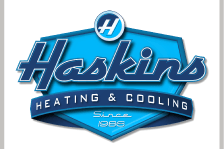Blog Post
Understanding Refrigerant Subcooling
- By Admin
- •
- 04 Oct, 2018

An air conditioning system utilizes refrigerant in order to accomplish its cooling. The cooling process takes place inside of the system's evaporator coil. As high-pressure liquid refrigerant flows into the evaporator coil, it experiences a sudden pressure drop. This causes the refrigerant's temperature to drop.
The blower system then circulates the warm, interior air around the evaporator coil. The chilled refrigerant absorbs heat through the walls of the evaporator coil. Once the coil has absorbed as much heat as possible, the cycle can repeat. To a large degree, the efficiency of an air conditioner has a lot to do with the thermal capacity of the refrigerant inside the evaporator coil.
One of the factors that determines how much heat the refrigerant can absorb is subcooling. Subcooling is a process that takes place inside of your condenser coil shortly before the refrigerant moves on to the evaporator coil.
This article takes a closer look at the important role that subcooling plays in overall air conditioning efficiency.
The blower system then circulates the warm, interior air around the evaporator coil. The chilled refrigerant absorbs heat through the walls of the evaporator coil. Once the coil has absorbed as much heat as possible, the cycle can repeat. To a large degree, the efficiency of an air conditioner has a lot to do with the thermal capacity of the refrigerant inside the evaporator coil.
One of the factors that determines how much heat the refrigerant can absorb is subcooling. Subcooling is a process that takes place inside of your condenser coil shortly before the refrigerant moves on to the evaporator coil.
This article takes a closer look at the important role that subcooling plays in overall air conditioning efficiency.
The Nature of Subcooling
Before getting to the specifics of subcooling, you should know what happens to the refrigerant once it exits your evaporator coil. At that point, the refrigerant has absorbed enough heat to change the liquid to a gas. This low-pressure gas then flows back to the condensing unit and enters the compressor.
The compressor increases the pressure of the refrigerant, giving it the speed necessary to continue traveling through the system. Next, the refrigerant flows into the condenser. The condenser lowers the refrigerant's temperature in order to convert it back to its liquid form. This conversion happens at the socalled saturation temperature.
Once the refrigerant has cooled down to the saturation temperature, it begins changing to a liquid. However, the cooling process doesn't stop there. Before leaving the condenser to return to the evaporator coil, the refrigerant's temperature drops below the saturation temperature into the realm of subcooling.
The compressor increases the pressure of the refrigerant, giving it the speed necessary to continue traveling through the system. Next, the refrigerant flows into the condenser. The condenser lowers the refrigerant's temperature in order to convert it back to its liquid form. This conversion happens at the socalled saturation temperature.
Once the refrigerant has cooled down to the saturation temperature, it begins changing to a liquid. However, the cooling process doesn't stop there. Before leaving the condenser to return to the evaporator coil, the refrigerant's temperature drops below the saturation temperature into the realm of subcooling.
The Importance of Subcooling
The most basic meaning of subcooling is any temperatures below the saturation temperature. Generally, the lowest temperature a condenser can achieve, the better. In other words, the colder the refrigerant is as it flows into the evaporator coil, the more heat it will be able to absorb.
In this regard, subcooling acts as a useful predictor of overall efficiency. Of course, in order to provide useful information, subcooling must be precisely quantified. Contractors quantify it by using special digital thermometers to measure the temperature of the refrigerant as it exits the condenser.
The difference between this temperature and the saturation temperature tells you the exact amount of subcooling. For a well-working system, subcooling usually falls into a range of 6 and 10 degrees Fahrenheit.
One of the most common sources of air conditioner inefficiency involves insufficient subcooling. This limits the amount of heat the refrigerant can absorb. In extreme cases, insufficient subcooling may even lead to the refrigerant converting back to its gaseous form before it ever reaches the evaporator coil.
Perhaps the most common cause of insufficient subcooling is an abnormally low refrigerant charge. Lack of refrigerant usually means that your system suffers from one or more leaks. Attending to the leaks and then increasing the system's refrigerant charge should restore proper subcooling.
Be aware, however, that subcooling can work against your system if it increases too far. An excessive amount of refrigerant will boost subcooling to a problematic level.
At this level, the refrigerant will become so cold that it does not all turn to a gas inside of the evaporator coil. As this liquid refrigerant flows into the compressor, it leads to dangerously high pressure levels. Liquids, unlike gases, cannot be compressed. For this reason, no liquid refrigerant should ever enter your compressor.
For more information about how subcooling works and why it's important to have monitored, contact the home HVAC pros at Haskins Heating & Cooling.
In this regard, subcooling acts as a useful predictor of overall efficiency. Of course, in order to provide useful information, subcooling must be precisely quantified. Contractors quantify it by using special digital thermometers to measure the temperature of the refrigerant as it exits the condenser.
The difference between this temperature and the saturation temperature tells you the exact amount of subcooling. For a well-working system, subcooling usually falls into a range of 6 and 10 degrees Fahrenheit.
One of the most common sources of air conditioner inefficiency involves insufficient subcooling. This limits the amount of heat the refrigerant can absorb. In extreme cases, insufficient subcooling may even lead to the refrigerant converting back to its gaseous form before it ever reaches the evaporator coil.
Perhaps the most common cause of insufficient subcooling is an abnormally low refrigerant charge. Lack of refrigerant usually means that your system suffers from one or more leaks. Attending to the leaks and then increasing the system's refrigerant charge should restore proper subcooling.
Be aware, however, that subcooling can work against your system if it increases too far. An excessive amount of refrigerant will boost subcooling to a problematic level.
At this level, the refrigerant will become so cold that it does not all turn to a gas inside of the evaporator coil. As this liquid refrigerant flows into the compressor, it leads to dangerously high pressure levels. Liquids, unlike gases, cannot be compressed. For this reason, no liquid refrigerant should ever enter your compressor.
For more information about how subcooling works and why it's important to have monitored, contact the home HVAC pros at Haskins Heating & Cooling.
Share
Tweet
Share
Mail
Haskins News

Haskins Heating & Cooling
5470 Highway 41-A
Joelton, TN 37080
Phone:
615-746-6390
Business Hours:
24-Hour Emergency Service
^
Content, including images, displayed on this website is protected by copyright laws. Downloading, republication, retransmission or reproduction of content on this website is strictly prohibited. Terms of Use
| Privacy Policy







